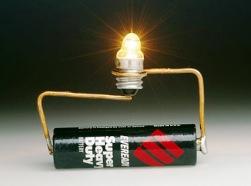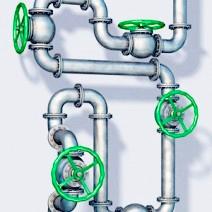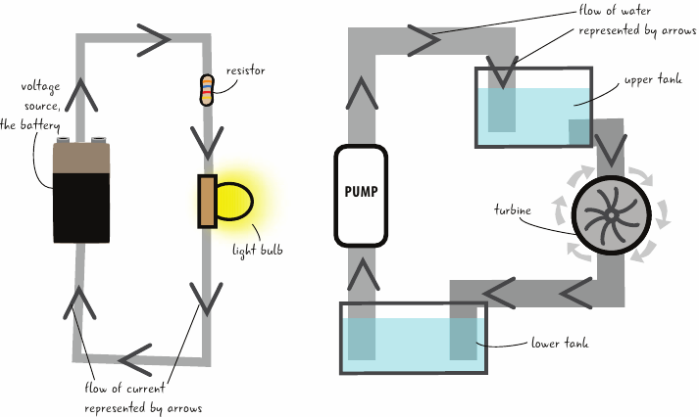Categories: Featured Articles » Interesting Facts
Number of views: 26499
Comments on the article: 9
Wiring and piping: analogies and differences
 Being an electrician, one often encounters the fact that people who are completely healthy and developed both physically and mentally experience a state of awe of electricity. At the same time, say, the installation of water supply and sewage does not seem very complicated to them.
Being an electrician, one often encounters the fact that people who are completely healthy and developed both physically and mentally experience a state of awe of electricity. At the same time, say, the installation of water supply and sewage does not seem very complicated to them.
Still: water runs to itself through pipes under pressure, and through pipes of larger diameter it is diverted to the sewer - everything is “easier than a steamed turnip”. It’s just a pity for people who look anxiously at a sparking outlet and are waiting electricianthat would have replaced it.
And since for many people who are afraid of electricity, the plumbing seems to be arranged more simply, then we will give some physical analogies between the electric current and the flow of water.
In what direction does the water run? - From a point with more pressure - to a point with less. Between points with the same pressure on the pipe wall there will be no water flow. But after all, the electric current also behaves: it arises between the points of the conductor, which have different values of the electric potential. The analogy is simple: the pipe is similar to a conductor, the water flow is similar to electric current, and the pressure in the pipeline is similar to electric potential.
Based on these analogies, we can pick up the peculiar "alter ego" of some household electrical devices and phenomena. These "second selves" will refer to plumbing and running water.
Take, for example, an electric switch. What is he doing? - Connects and disconnects two wires, one of them being a “phase”, and current flows through it, and the second wire goes to the load. Zero wires are not connected to the switch.
 Analogs for electric switches among pipeline valves will be valves for cold and hot water at the entrance to the apartment. These valves, or valves, as a rule, are in one of the states: “off” or “on”, they do not have their own resistance, and their purpose is to supply water to the consumer. And any switch just as well supplies the consumer (for example, a lamp) an electric current. The analogy is obvious.
Analogs for electric switches among pipeline valves will be valves for cold and hot water at the entrance to the apartment. These valves, or valves, as a rule, are in one of the states: “off” or “on”, they do not have their own resistance, and their purpose is to supply water to the consumer. And any switch just as well supplies the consumer (for example, a lamp) an electric current. The analogy is obvious.
To find an analog for a socket, you have to show a little imagination. Two wires come into the outlet, and they do not have contact with each other. Still, it’s a “phase” and a “zero”, I think there’s no need to talk about the consequences of a direct connection. There is no current in the outlet if the consumer is not turned on. And when the consumer is turned on, the current is determined by its resistance.
What is the “phase" for the water supply? This, of course, is a thin submarine pipe under pressure. The working “zero” is the drainage pipe. Unlike electrical wiring here is that for water the whole environment is a conductor, so the "phase conductor" always needs additional locking devices (chokes). In plumbing, these chokes can be called faucets, and when closed, they completely take on all the pressure (read: voltage), avoiding leaks.

Of course, they don’t put chokes in the socket, but otherwise they are very similar to the faucet installed above the sink. A consumer may be, for example, a washing machine, the inlet hose of which is connected to the gander, and the drain is directed into the sink. We open the tap to full - its resistance drops to almost zero, but there is no short circuit, because there is resistance from the machine.
By the way, a short circuit in the water supply - what is it? We open the tap above the sink completely, turning off the aforementioned machine, and observe. The water rumbles and splashes, and perhaps even the sink does not cope with the incoming stream. But, nevertheless, it is not as impressive as an electric short circuit, literally sweeping away everything in its path.This means that the water supply is more resistant to its short circuits, and they are the operating mode for it. Therefore, the water supply system is not equipped with “overcurrent protection”.
Of course, the above analogies are very arbitrary, and, in particular, do not take into account the existence of electromagnetic fields. Yes, and climb into electronics with "plumbing" ideas about electric current is not worth it. But at a minimum household level, a comparison with water supply can be popular and useful.
Alexander Molokov
See also at bgv.electricianexp.com
:
